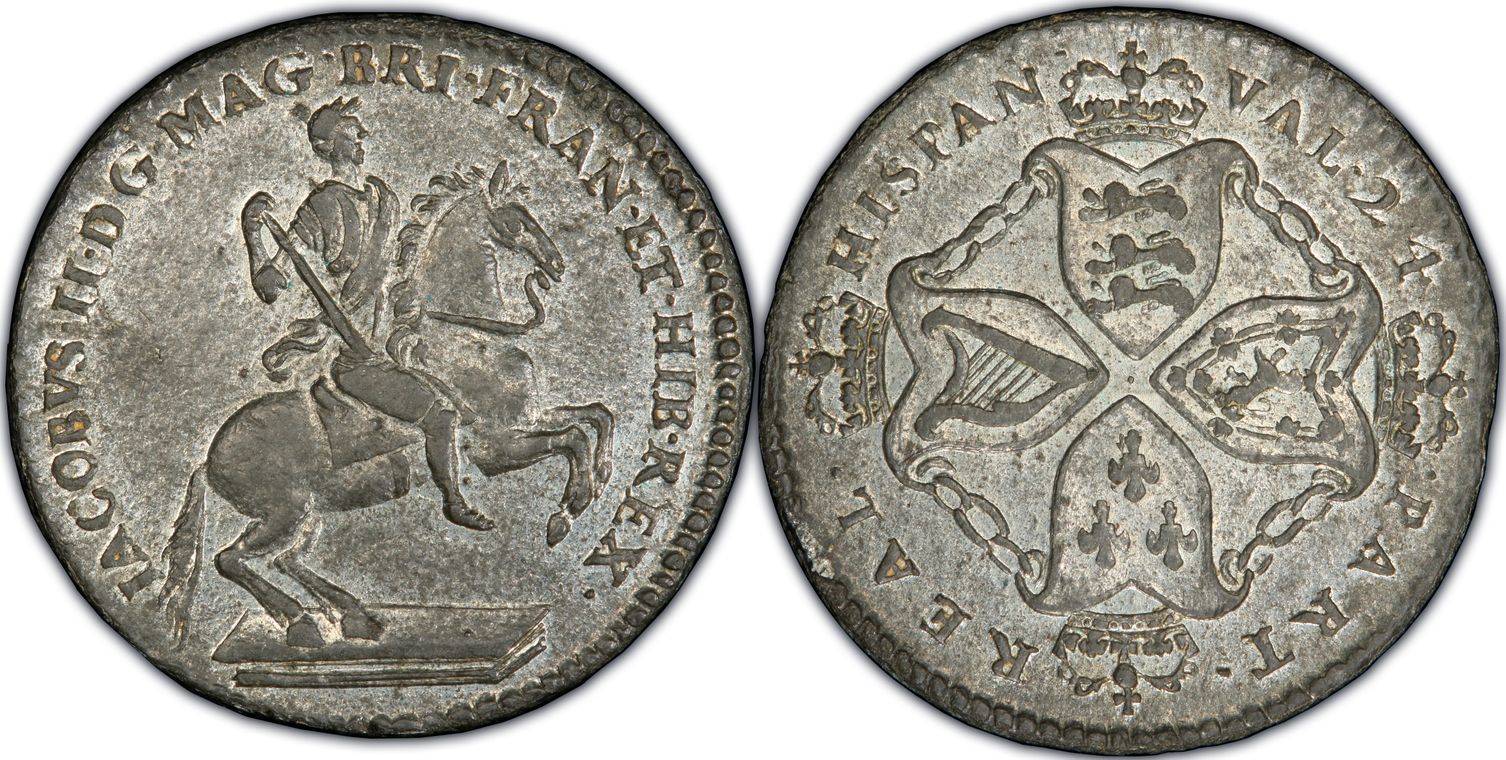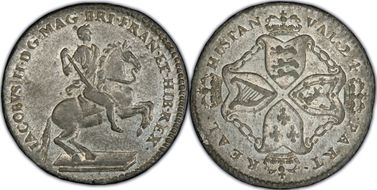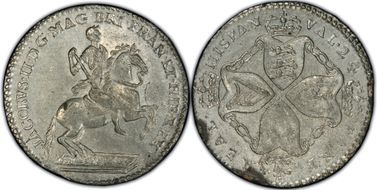(1688) 1/24RL American Plantations Original MS63 认证号06729009, PCGS号49
专家评论
Ron Guth
These have been called 1/24 Part Reals (Breen), 1/24 Reals (Akers), and Farthings (Akers and Ira & Larry Goldberg Coins & Collectibles)
The following history is courtesy of Ira & Larry Goldberg Coins & Collectibles, Inc.:
The Plantation Token came about because of the tin price collapse in England during the period of 1679-80 (Breen). Although tin had been discovered and used since antiquity, being useful in making bronze, the idea of using tin for coinage had not been employed. This is because of the fact that tin turns into dust when exposed to extreme cold almost instantly, more slowly at normal temperatures, with evidence of tin pesting a by product of time and exposure to the elements. Nevertheless, the tin mine owners of Cornwall and Devonshire had a crisis, their tin mines were virtually worthless, and something had to be done with all that tin. What better solution than convincing the royal authorities under James II to coin the tin into money? Now the tin miners would have a steady source to sell their tin production to at higher prices than ever. Thus the Tower Mint began producing tin farthings and half pence for British domestic circulation from 1684-92. King James II's secretary Henry Guy then hatched the idea of making tin coins for the American Plantations, as the Colonies were known at that time, unless the Tower Mint had any objections. Apparently no objections were voiced, and soon the Tower Mint was coining these 1/24th Real coins for export. Literally within a few weeks of these being struck., James II was ousted during the "Glorious Revolution" which interrupted coinage. Analysis shows these coins to be 97.5% pure tin, which accounts for the always rough surfaces seen today. A London coin dealer named Matthew Young obtained two pairs of dies from these and restruck several in tin around 1828, these restrikes display a die crack in the right obverse field, and are nearly as rare as the originals..."
In 2013, Dennis Wierzba advanced the theory that die alignment could be used to differentiate between Originals and Restrikes of the 4-E variety. Wierzba noted that Originals have the Irish harp between 2 and 3 o'clock, and Restrikes have the Irish harp between 5 and 6 o'clock. Wierzba awaits word from other collectors who will either confirm or debunk his theory. If proven, this would be the first, reliable method for determining the status of these interesting coins.
Sources and/or recommended reading:
"Walter Breen's Complete Encyclopedia of U.S. and Colonial Coins" by Walter Breen
"Whitman Encyclopedia of Colonial and Early American Coins" by Q. David Bowers
Dennis Wierzba, "American Plantation Token 4-E: Two Distinct Reverse Orientations (Original vs. Restrike?)", The C4 Newsletter 21, no. 1 (Spring 2013), 13-14.






















